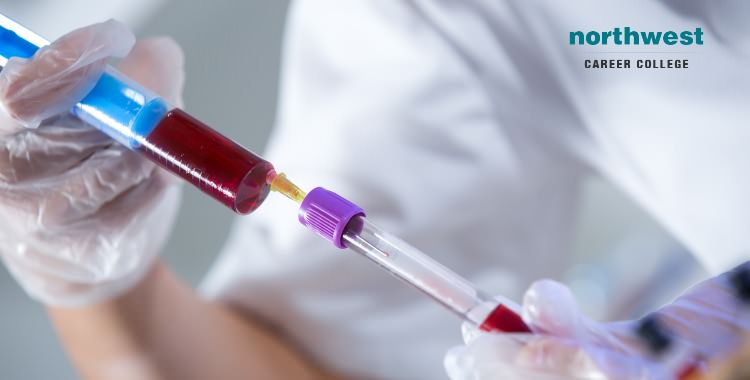Little Known Questions About Northeast Medical Institute - New Haven Campus Phlebotomy Course & Cna Class.
Little Known Questions About Northeast Medical Institute - New Haven Campus Phlebotomy Course & Cna Class.
Blog Article
Some Known Incorrect Statements About Northeast Medical Institute - New Haven Campus Phlebotomy Course & Cna Class
Table of ContentsWhat Does Northeast Medical Institute - New Haven Campus Phlebotomy Course & Cna Class Do?Our Northeast Medical Institute - New Haven Campus Phlebotomy Course & Cna Class StatementsThe smart Trick of Northeast Medical Institute - New Haven Campus Phlebotomy Course & Cna Class That Nobody is DiscussingSome Known Factual Statements About Northeast Medical Institute - New Haven Campus Phlebotomy Course & Cna Class The Main Principles Of Northeast Medical Institute - New Haven Campus Phlebotomy Course & Cna Class The Definitive Guide to Northeast Medical Institute - New Haven Campus Phlebotomy Course & Cna Class
The use of such gadgets ought to be accompanied by various other infection avoidance and control techniques, and training in their usage.For setups with reduced resources, price is a driving factor in purchase of safety-engineered devices. Where safety-engineered tools are not offered, competent usage of a needle and syringe is acceptable.
Among the important pens of quality of treatment in phlebotomy is the involvement and participation of the client; this is equally advantageous to both the wellness worker and the client. Clear details either written or verbal need to be available to every person who goes through phlebotomy. Annex F gives sample text for describing the blood-sampling treatment to a client. labelling); transport problems; analysis of results for medical management. In an outpatient department or center, give a devoted phlebotomy workstation containing: a clean surface area with two chairs (one for the phlebotomist and the various other for the patient); a hand laundry container with soap, running water and paper towels; alcohol hand rub. In the blood-sampling area for an outpatient division or clinic, provide a comfortable reclining couch with an arm rest.
Everything about Northeast Medical Institute - New Haven Campus Phlebotomy Course & Cna Class
Make certain that the signs for blood tasting are clearly specified, either in a composed protocol or in recorded instructions (e.g. in a research laboratory type). Accumulate all the devices required for the procedure and area it within risk-free and easy reach on a tray or trolley, ensuring that all the products are plainly visible.
Where the client is grown-up and aware, adhere to the steps detailed below. Introduce on your own to the patient, and ask the individual to state their full name. Inspect that the laboratory type matches the person's identity (i.e. match the client's information with the laboratory form, to make sure exact identification). Ask whether the patent has allergic reactions, phobias or has ever before collapsed during previous injections or blood attracts.
Make the individual comfy in a supine placement (ideally). Place a clean paper or towel under the patient's arm. Talk about the test to be executed (see Annex F) and get spoken consent. The patient has a right to refuse a test at any type of time before the blood sampling, so it is necessary to make sure that the individual has actually understood the procedure.
Top Guidelines Of Northeast Medical Institute - New Haven Campus Phlebotomy Course & Cna Class
Prolong the client's arm and examine the antecubital fossa or lower arm. Situate a capillary of an excellent size that is visible, straight and clear.
DO NOT put the needle where capillaries are diverting, because this increases the opportunity of a haematoma. The vein must show up without using the tourniquet. Situating the vein will aid in figuring out the right size of needle. Use the tourniquet regarding 45 finger widths above the venepuncture site and re-examine the vein.
Haemolysis, contamination and existence of intravenous liquid and medicine can all alter the results (39. Nursing staff and medical professionals directory might access main venous lines for samplings complying with protocols. Specimens from central lines bring a threat of contamination or incorrect laboratory test outcomes. It is appropriate, but not suitable, to injure specimens when first introducing an in-dwelling venous tool, prior to linking the cannula to the intravenous liquids.
Unknown Facts About Northeast Medical Institute - New Haven Campus Phlebotomy Course & Cna Class
Failing to enable adequate contact time increases the danger of contamination. DO NOT touch the cleaned up site; in certain, DO NOT place a finger over the vein to guide the shaft of the subjected needle.
Ask the person to form a clenched fist so the blood vessels are a lot more noticeable. Get in the capillary promptly at a 30 level angle or less, and remain to introduce the needle along the vein at the easiest angle of entry - Phlebotomy Classes. Once sufficient blood has been accumulated, launch the tourniquet prior to withdrawing the needle
Not known Details About Northeast Medical Institute - New Haven Campus Phlebotomy Course & Cna Class
Withdraw the needle delicately and apply gentle stress to the website with a tidy gauze or completely dry cotton-wool sphere. Ask the patient to hold the gauze or cotton woollen in position, with the arm extended and elevated. Ask the person NOT to flex the arm, due to the fact that doing so causes a haematoma.

Not known Facts About Northeast Medical Institute - New Haven Campus Phlebotomy Course & Cna Class
Do not push the syringe plunger since added stress enhances the threat of haemolysis. Where possible, keep televisions in a shelf and move the rack in the direction of you. Infuse downwards into the proper coloured stopper. DO NOT remove the stopper since it will certainly release the vacuum. If the sample tube does not have a rubber stopper, inject exceptionally slowly into television as decreasing the pressure and velocity utilized to move the specimen reduces the danger of haemolysis.

Report this page